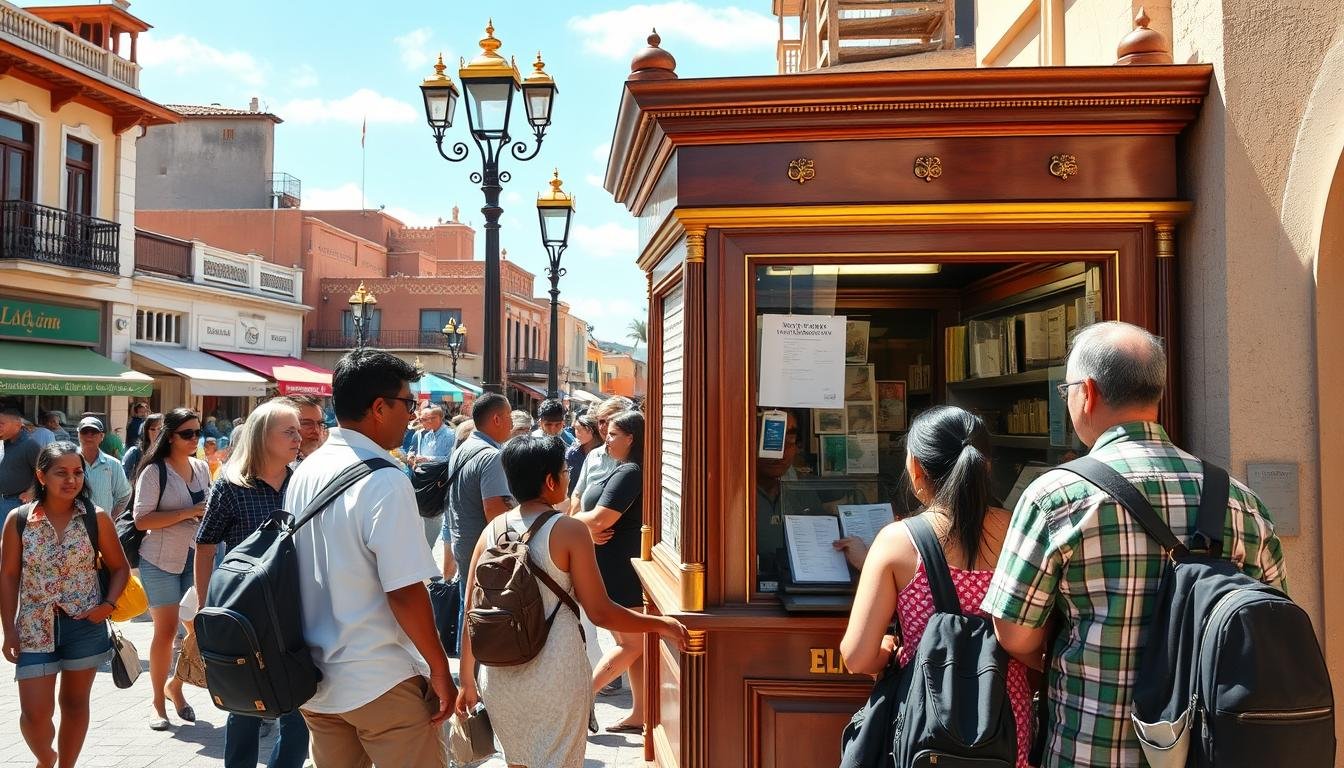✓ Accommodations ✓ Flights ✓ Rental Cars
Did you know that over 60% of travelers face unexpected fees due to poor currency management? Understanding how to handle money abroad can make or break your trip. This is especially true in unique destinations where financial systems differ from what you’re used to.
Knowing the local currency and available payment options can save you time and stress. From exchange rates to transaction methods, being prepared ensures a smoother experience. Whether you’re using cash or a card, understanding the basics is key.
This guide will help you navigate financial details, so you can focus on enjoying your journey. Let’s dive into the essentials of managing your money wisely while exploring new places.
Introduction: Navigating Tokelau’s Currency and Payment Systems
Navigating currency and payment options abroad can be easier with the right knowledge. Understanding the local financial system helps you avoid unnecessary fees and ensures a smoother experience. Whether you’re exchanging money or using a card, being prepared is key.
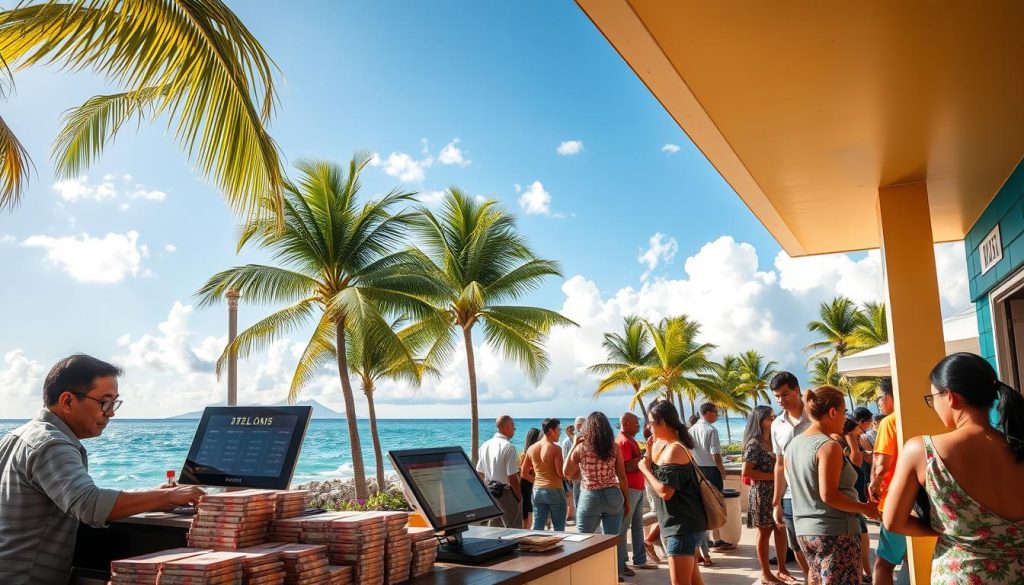
Overview of the Financial Environment
The financial landscape in many destinations includes a mix of cash and digital solutions. Researching available payment methods before your trip can save you time and stress. For example, some places prefer cash for small transactions, while others are more card-friendly.
Exchange rates and fees can vary widely depending on where you convert your money. Comparing rates at banks, airports, or local exchange services can help you get the best deal. Knowing these details ensures you don’t overspend on unnecessary charges.
How Currency Impacts Your Travel Experience
Local currency plays a big role in everyday transactions. Understanding the denominations and how they’re used can make shopping and dining more convenient. For instance, smaller bills are often preferred for street vendors or taxis.
Digital payments are becoming more common, but it’s still wise to carry some cash. This is especially true in areas where card services might not be widely accepted. Balancing both options ensures you’re prepared for any situation.
By researching and comparing exchange rates and payment methods, you can avoid pitfalls and focus on enjoying your trip. These insights help you manage your money wisely and make the most of your travel experience.
Local Currency Insights & Denominations
Getting familiar with the local money system can save you time and effort. Understanding the local currency and its denominations ensures you’re prepared for everyday transactions. Whether you’re buying food, souvenirs, or paying for services, knowing the basics makes your trip smoother.
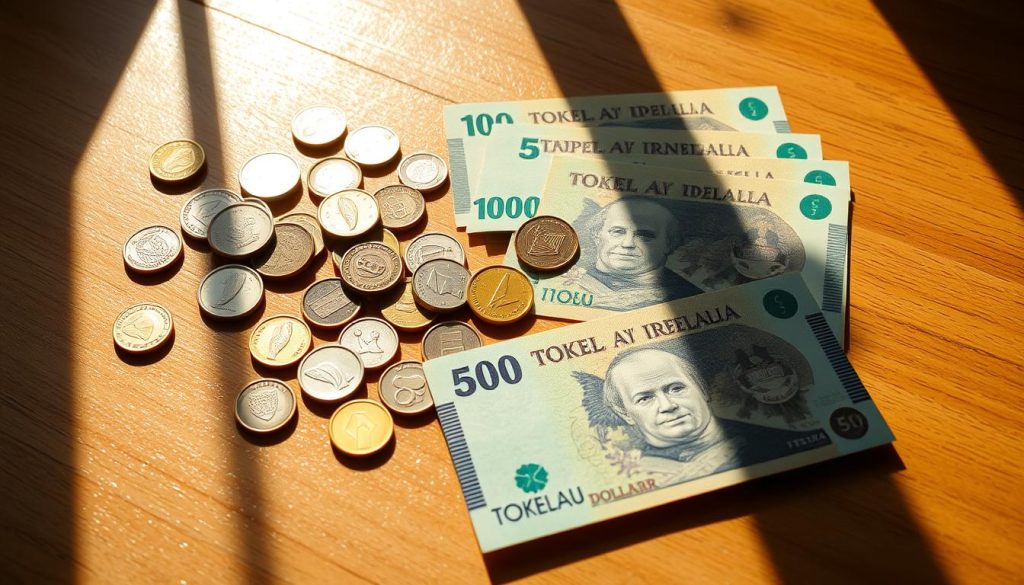
Understanding the Official Currency
The official currency is divided into coins and banknotes, each serving specific purposes. Coins are ideal for small purchases, while banknotes are used for larger transactions. Familiarizing yourself with these formats helps you avoid confusion during your trip.
For example, smaller coins are perfect for street vendors or public transport. Larger banknotes are better suited for restaurants or hotels. Knowing which denominations to use in different situations ensures you’re always prepared.
Common Denominations and Their Uses
Here’s a breakdown of the most common denominations and their typical uses:
| Denomination | Common Use |
|---|---|
| Small Coins | Street food, public transport, tips |
| Medium Banknotes | Local markets, cafes, small shops |
| Large Banknotes | Hotels, restaurants, major purchases |
Carrying a mix of coins and banknotes ensures you’re ready for any situation. It also helps you avoid the hassle of breaking large bills for small purchases.
Additionally, recognizing genuine banknotes is crucial. Look for security features like watermarks, holograms, and unique textures. This knowledge protects you from counterfeit money and ensures your cash is valid.
By understanding the local currency, you can budget effectively and make smarter spending decisions. This guide ensures you’re well-prepared to handle money confidently during your travels.
Preparing for Currency Exchange in Tokelau
Planning your currency exchange ahead of time can save you money and stress. Knowing where and how to convert your money ensures a smooth financial experience. With the right tips, you can avoid unnecessary fees and get the best exchange rate possible.
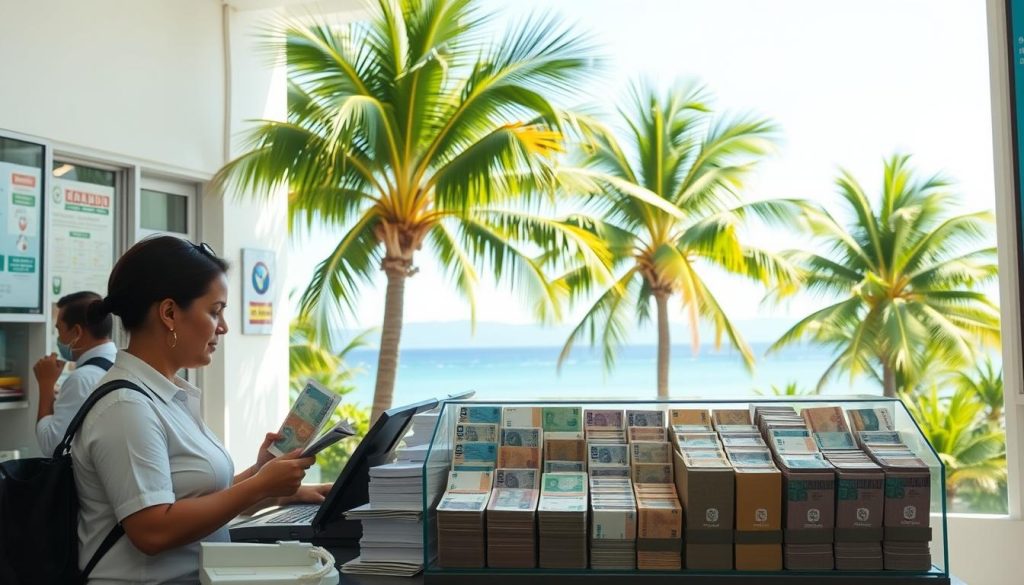
Tips for Finding the Best Exchange Rates
Start by comparing exchange rates from different providers. Banks and reputable exchange offices often offer better rates than airports or tourist areas. For example, local banks like Bangkok Bank or services like SuperRich are known for competitive rates and lower fees.
Always check for hidden fees before committing to a transaction. Some providers may advertise low rates but add extra charges. Researching online or using apps like XE Currency Converter can help you find the best deal.
Where to Exchange Money Upon Arrival
Avoid exchanging money at airports, as they typically charge higher fees. Instead, look for local banks or trusted exchange offices in the city. These locations often provide better rates and a more secure system for currency conversion.
Using ATMs strategically can also help you save on fees. Choose ATMs affiliated with major banks to minimize extra charges. Always notify your bank before traveling to avoid issues with your debit card or credit card.
By planning ahead and comparing options, you can ensure a hassle-free exchange process. This way, you’ll have more time to enjoy your trip without worrying about unnecessary costs.
Tokelau: Ultimate Travelers Guide to Currencies & Payments
Understanding the complexities of managing money abroad can transform your travel experience. This guide is designed to help you navigate the financial landscape with confidence, ensuring you make the most of your trip.
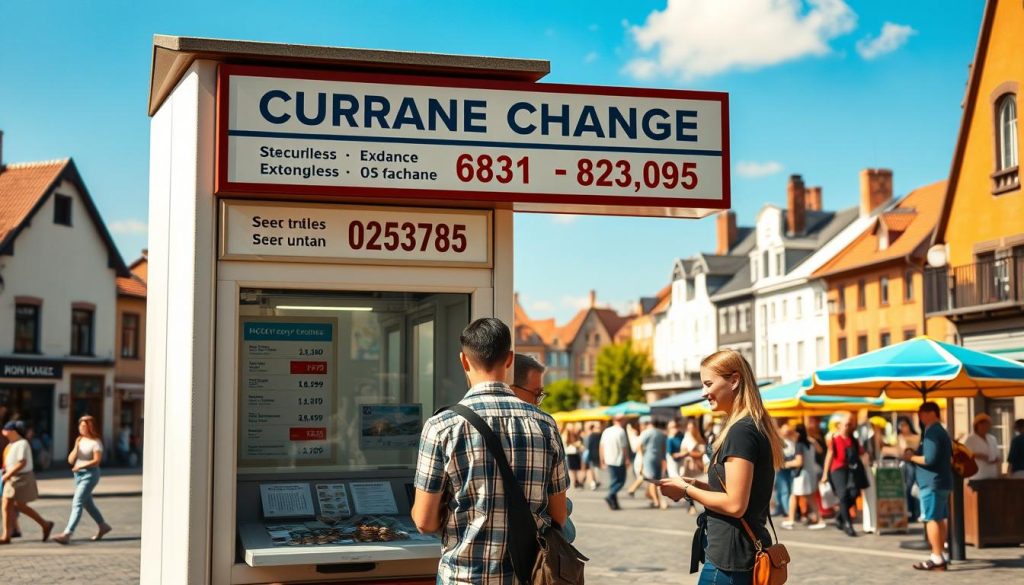
So far, we’ve covered essential topics like finding the best exchange rates, understanding local currency, and effective budgeting strategies. These insights ensure you’re prepared for every financial scenario, from small purchases to major expenses.
One of the key takeaways is the importance of understanding cost and rate differences. For example, traditional banks often charge high fees for international transfers, while services like Wise offer competitive rates. Knowing these details can save you significant money.
Market trends also play a crucial role. For instance, using local card acquiring services can reduce fees and increase payment approval rates. Staying informed about these trends ensures you’re always ahead of the curve.
Here are some practical examples to illustrate these points:
- When sending money from New Zealand to the United States, compare providers like Cambridge Currencies and Wise for the best rates.
- Use ATMs affiliated with major banks to minimize transaction fees.
- Carry a mix of cash and cards to handle both small and large payments.
By revisiting previous sections, you can dive deeper into specific topics like local currency insights or exchange tips. This guide is your go-to resource for a stress-free financial experience.
Remember, managing your money wisely is not just about saving—it’s about maximizing the value of every dollar. With the right knowledge, you can focus on enjoying your journey without financial worries.
Managing ATM Withdrawals and Card Payments
Handling your finances efficiently while traveling can make a big difference in your overall experience. Whether you’re using an ATM or making card payments, understanding how to minimize fees and manage transactions wisely is essential. This guide will help you navigate these processes with ease.
Minimizing ATM Fees and Transaction Costs
One of the easiest ways to save money is by reducing ATM fees. Always choose ATMs affiliated with major banks, as they often charge lower fees compared to stand-alone machines. For example, withdrawing larger sums less frequently can help you avoid multiple transaction charges.
Declining dynamic currency conversion is another smart move. This service, offered at some ATMs, allows you to withdraw money in your home currency. However, the exchange rates are usually unfavorable, leading to higher costs. Always opt for the local currency to get the best rate.
Choosing the Right Card for Payments
When it comes to card payments, using a chip-enabled debit card or credit card is highly recommended. These cards offer better security and are widely accepted. Additionally, notify your bank before traveling to prevent your card from being flagged for suspicious activity.
Here’s a quick comparison of card options:
| Card Type | Best Use |
|---|---|
| Debit Card | Everyday purchases, ATM withdrawals |
| Credit Card | Larger expenses, online bookings |
Carrying a mix of cash and cards ensures you’re prepared for any situation. For small purchases or tipping, cash is often more convenient. For larger expenses, using a card can save you from carrying too much cash.
By following these tips, you can manage your payments and withdrawals efficiently, ensuring a stress-free travel experience. Plan ahead, compare rates, and always stay informed to make the most of your money.
Budgeting and Payment Tips for All Travel Styles
Whether you’re a budget traveler or seeking luxury, smart planning is key. Managing your money effectively ensures you get the most out of your trip. From daily expenses to unexpected costs, being prepared makes all the difference.
Smart Budgeting Strategies for Budget-Conscious Travelers
For budget travelers, every dollar counts. Start by setting a daily spending limit based on your overall cost. For example, a daily budget of $25 to $45 can cover basic needs like food, transport, and activities.
Carry a mix of cash and cards to handle different payment situations. Cash is ideal for small vendors or street food, while cards are better for larger purchases. Always compare service fees to avoid unnecessary charges.
Track your expenses daily using a simple app or notebook. This helps you stay within your budget and identify areas where you can save. Planning ahead also reduces the risk of overspending.
Optimizing Spending for Mid-Range and Luxury Experiences
If you’re traveling mid-range or luxury, focus on maximizing value. A daily budget of $50 to $100 allows for comfortable accommodations and dining. For luxury trips, budgets starting at $150 ensure premium experiences.
Use cards for most payments to earn rewards or cashback. However, keep some cash on hand for tips or small purchases. Research exchange rates to get the best deal when converting currency.
Consider booking activities or meals in advance to secure better rates. This also saves time and ensures availability. Balancing convenience and cost enhances your travel experience.
Here are some practical tips for all travel styles:
- Compare service fees for currency conversion to save money.
- Carry a mix of cash and cards for flexibility.
- Track daily expenses to stay within your budget.
- Plan ahead to avoid last-minute costs or overspending.
By following these strategies, you can manage your money wisely and enjoy a stress-free trip. Whether you’re on a tight budget or splurging on luxury, smart planning ensures you make the most of every dollar.
Alternative Payment Methods and Digital Wallet Solutions
Exploring alternative payment methods can enhance your travel experience by offering convenience and security. With the rise of digital solutions, managing your finances abroad has never been easier. From mobile payments to contactless options, these systems simplify transactions and reduce hassle.
The Rise of Mobile Payments and Digital Wallets
Mobile payments and digital wallets are becoming the preferred option for many travelers. Apps like Wise, Revolut, and TrueMoney Wallet allow you to store multiple currencies and make seamless transfers. This eliminates the need for constant currency conversion and reduces fees.
These solutions also offer enhanced security. Features like encryption and biometric authentication protect your funds. For example, PayPal and Apple Pay are widely accepted and provide a secure way to make purchases without sharing your card details.
Exploring Contactless Payment Options
Contactless payments are fast, safe, and increasingly popular. Using a debit or credit card with tap-to-pay technology speeds up transactions. This is especially useful in busy areas like airports or markets.
Many digital wallets also support contactless payments. For instance, Google Pay and Samsung Pay let you pay with just your phone. This system is not only convenient but also reduces the risk of losing cash or cards.
Here’s a quick comparison of traditional and modern payment methods:
- Traditional Cards: Require physical swiping or inserting, often with higher fees for international use.
- Digital Wallets: Offer multi-currency support, lower fees, and enhanced security features.
By adopting these alternative payment methods, you can streamline your financial experience while traveling. Whether you’re using a mobile app or a contactless card, these options ensure a smoother and safer journey.
Safety and Smart Money Handling in Tokelau
Ensuring the safety of your finances while traveling is crucial for a stress-free experience. Managing your money wisely not only protects you from theft but also helps you avoid unnecessary expenses. By following a few simple tips, you can handle your cash and cards securely and confidently.
Securing Your Cash and Cards
One of the best ways to protect your money is by dividing it between multiple secure locations. For example, keep some cash in a money belt, some in your hotel safe, and a small amount in your wallet. This reduces the risk of losing everything if one location is compromised.
Using a money belt or hidden pouch is highly recommended. These items are discreet and can be worn under your clothing, making it difficult for thieves to access. Additionally, avoid carrying large amounts of cash in crowded areas or tourist hotspots.
Precautionary Tips for Safe Transactions
When making payments, always choose reputable providers for currency exchange or bank services. Avoid street vendors or unlicensed exchange offices, as they may offer counterfeit currency or charge hidden fees. Always check the authenticity of banknotes by looking for security features like watermarks or holograms.
Here’s a quick guide to safe payment practices:
| Tip | Why It Matters |
|---|---|
| Use ATMs in secure locations | Reduces the risk of card skimming or theft |
| Notify your bank before traveling | Prevents your card from being blocked for suspicious activity |
| Monitor your accounts regularly | Helps you spot unauthorized transactions quickly |
By following these strategies, you can minimize risk and ensure your money stays safe. Whether you’re using cash or cards, being vigilant and prepared is key to a worry-free trip.
Conclusion
Managing your finances abroad doesn’t have to be stressful with the right knowledge. This guide has covered essential details to help you navigate currency exchange, payment methods, and budgeting strategies. Understanding local rates and fees can save you time and cost, ensuring a smoother experience.
By applying the practical tips shared here, you can maximize value and avoid unnecessary charges. Whether you’re using credit cards, digital wallets, or cash, diversifying your payment options enhances convenience and security.
This resource is designed to simplify the complexities of international transactions. Refer back to it whenever needed for updated insights and strategies. Proper planning ensures you’re well-prepared, allowing you to focus on enjoying your journey.
Take the first step toward a stress-free trip by implementing these tips. Your financial preparedness will make all the difference in creating a memorable experience.
The above is subject to change.
Check back often to TRAVEL.COM for the latest travel tips and deals.
